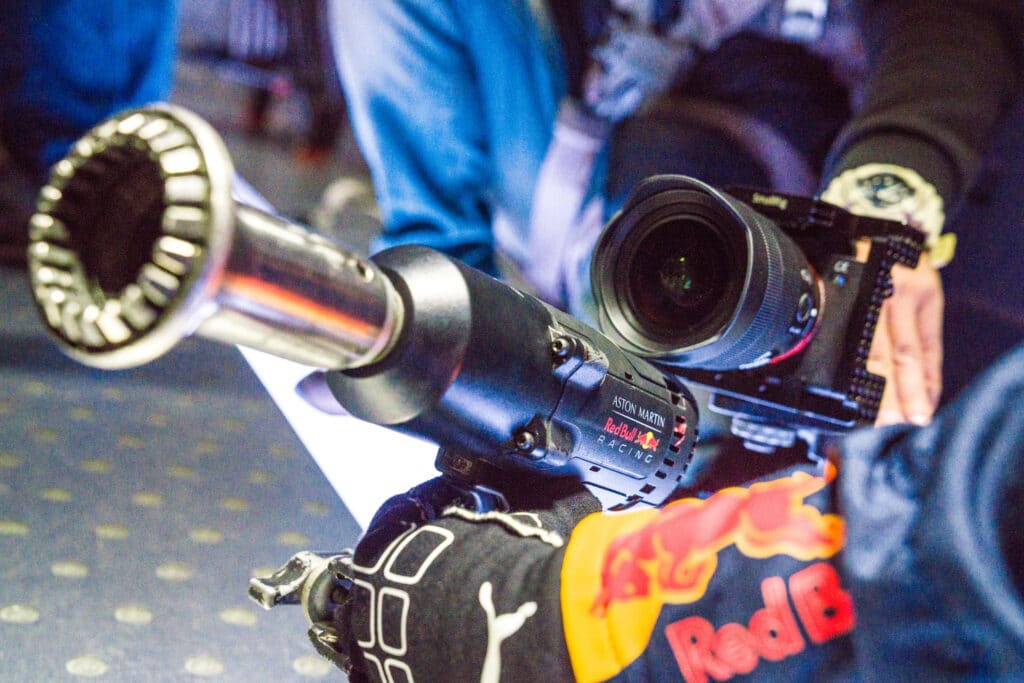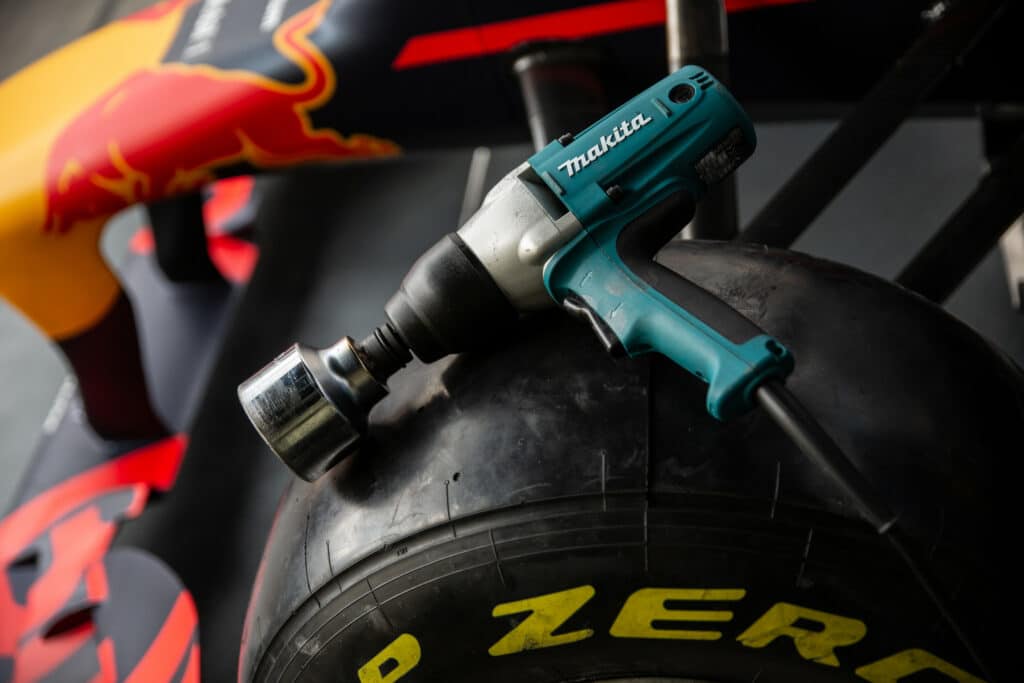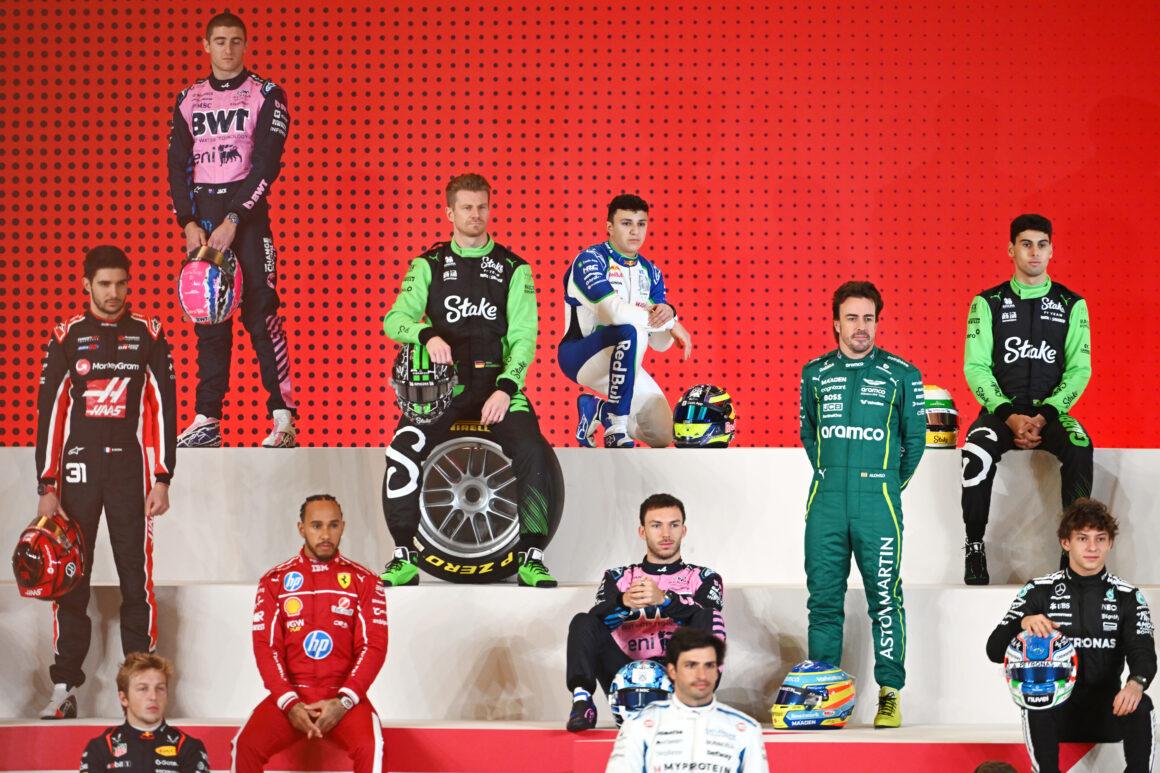Formula 1 wheel guns play a crucial role in the lightning-fast pit stops seen in F1 races. These wheel guns, like Paoli’s Hurricane 2.0, are advanced tools that cost upwards of $20,000-$30,000 and are operated by compressed air and electronically connected to the pit crew’s system. They are designed to quickly tighten or loosen wheel nuts with incredible precision and speed.
Key Points:
- Manufacture and Design: Paoli, an Italian company founded by Dino Paoli, supplies wheel guns for all Formula 1 teams. These guns are made from high-performance materialss like aluminum alloys, titanium, carbon fiber, and aerospace-grade steel
- Functionality: The wheel guns operate by pulling the trigger to either tighten or loosen the wheel nut. They have evolved from conventional impact guns to mechatronic systems that can spin up to 15,000 RPM and deliver over 3,000 ft-lbs of torque
- Pit Stop Efficiency: In Formula 1, where every millisecond counts, the perfect pit stop can be a game-changer. Paoli’s wheel guns are designed for speed and consistency to ensure fast, reliable, and safe wheel changes
- Innovation: Paoli focuses on improving the reliability and usability of its wheel guns. Their latest models feature electronic actuators and mechatronic systems like E-Shuttle for enhanced control and precision during pit stops
The Importance of Wheel Gun Efficiency in F1 Races
When it comes to Formula 1 pit stops, effectiveness is important.
In a race when milliseconds may make all the difference, a properly executed tire change can spell the difference between victory and failure.
The newest Hurricane 2.0 model from Paoli can deliver the force and speed required for speedy tire removal and installation in addition to providing dependable performance and simplified operation.
However, speed is only one component of the puzzle.
Teams need consistency more than just the quickest pit stop.
The target is to keep 80% of pit stops under 2.7–2.8 seconds, and teams have been able to maintain that degree of consistency under pressure as a result of developments in Wheel Gun technology.

Roles and Responsibilities of Wheel Gun Operators
A talented group of more than 20 mechanics, including the Wheel Gun operators, is at the center of each pit stop.
These people are in charge of taking off and putting back on the car’s wheels, making sure the nuts are secured tightly.
To accomplish a quick, seamless pit stop, wheel gun operators must operate in perfect sync with the rest of the crew.
This calls for accuracy, hand-eye coordination, and pressure-applied split-second decision-making.
Achieving the ideal pit stop requires a true team effort, with each operator contributing significantly to the success of their squad.
Key Components and Features of Modern Wheel Guns
The ingenuity and design of modern wheel guns is astounding.
High-performance materials including titanium, aerospace-grade steel, and aluminum ergal are used in their construction.
The Wheel Guns are able to remain lightweight while being highly strong and durable because to these materials, which are generally used in the aerospace sector.
The electronic actuator, which makes it quick and simple to switch between the loosening and tightening modes, is one notable aspect of the most recent generation of Wheel Guns.
This shortens the process’s duration and eases the user’s physical burden.
These cutting-edge Wheel Guns also feature real-time telemetry data, which enables teams to track and enhance their performance over time.

Comparing Different Wheel Gun Systems in Formula 1
All Formula 1 teams use Wheel Guns from Paoli, however teams frequently alter and personalize these systems to meet their particular requirements and preferences.
For fast visual confirmation of appropriate tightening and mode selection during pit stops, several teams have chosen to add LED status indicators at the front of the gun.
Other teams have altered the internal workings of the Wheel Guns with the goal of enhancing dependability, ergonomics, or even communication during pit stops.
These adaptations serve as a visual representation of the F1 teams’ ongoing efforts to use technology and innovation to obtain a competitive edge.
Safety Measures and Regulations for Wheel Guns in F1
Safety is the main worry when utilizing Wheel Guns because of the enormous power output and speed involved.
To control their use and protect the safety of the crew, drivers, and spectators alike, rules have been put in place.
Wheel nut retainers in particular aid in reducing the danger of accidents brought on by unsecured wheel nuts.
To reduce potential risks, Formula 1 also strictly enforces rules regarding crew member placement and pit stop procedures.
While maintaining a balance between the requirement for speed and efficiency during pit stops, teams must comply by these rules.
Challenges and Innovations in Wheel Gun Technology
The development of the Wheel Gun is still ongoing as teams look for competitive advantages.
One illustration is the use of lighter gas like helium to power the weapons, which provided a 15% performance boost.
To save expenses and avoid using non-renewable resources, the practice was outlawed in 2012.
More advancements in Wheel Gun design and operation are anticipated as Formula 1 continues to push the limits of mechanical and human performance.
In the quest for the ideal pit stop, this thrilling, high-stakes world will undoubtedly keep producing ground-breaking technologies.


